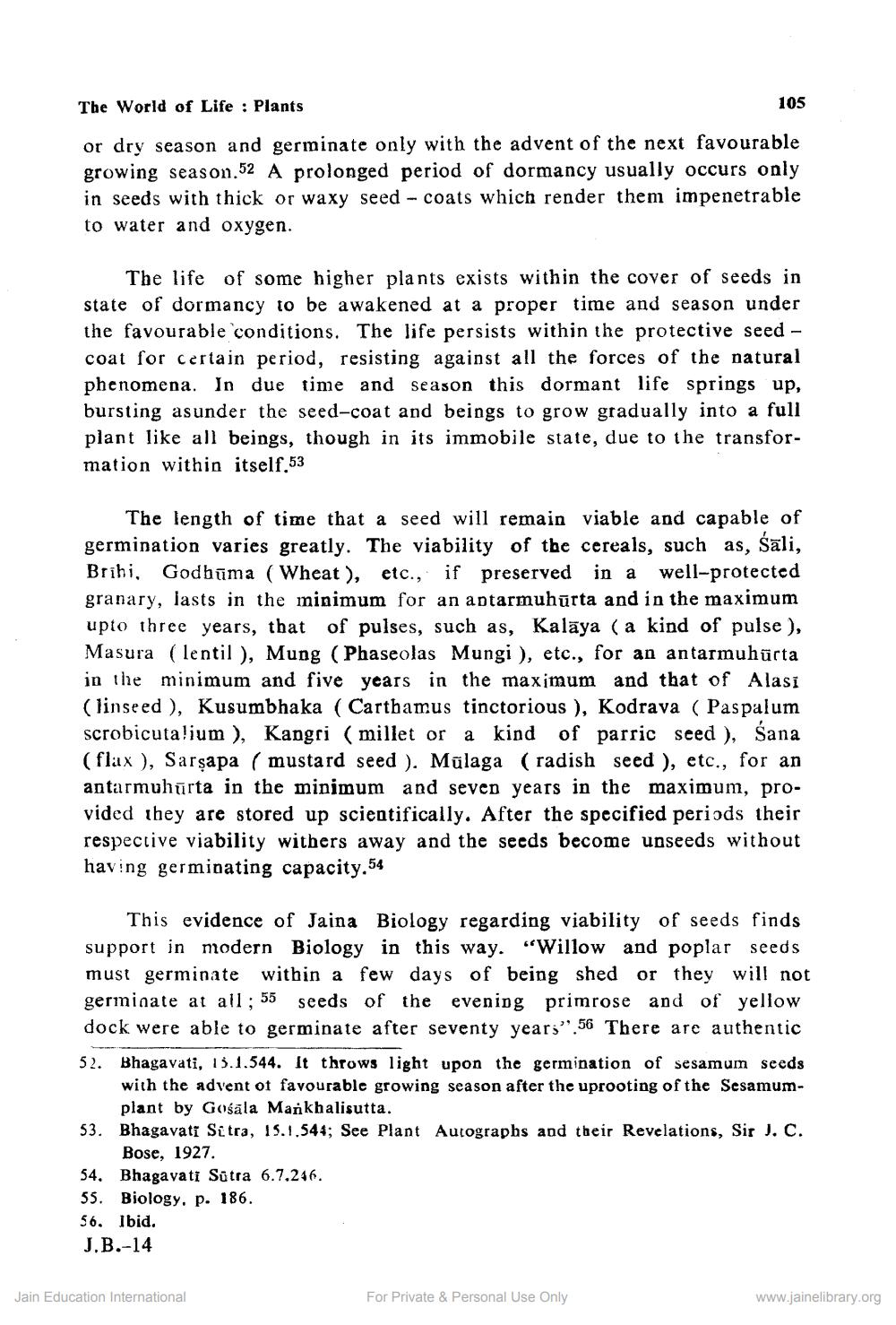________________
The World of Life : Plants
105
or dry season and germinate only with the advent of the next favourable growing season.52 A prolonged period of dormancy usually occurs only in seeds with thick or waxy seed - coats which render them impenetrable to water and oxygen.
The life of some higher plants exists within the cover of seeds in state of dormancy to be awakened at a proper time and season under the favourable conditions. The life persists within the protective seed - coat for certain period, resisting against all the forces of the natural phenomena. In due time and season this dormant life springs up, bursting asunder the seed-coat and beings to grow gradually into a full plant like all beings, though in its immobile state, due to the transformation within itself.53
The length of time that a seed will remain viable and capable of germination varies greatly. The viability of the cereals, such as, Sali, Brihi, Godhūma (Wheat), etc., if preserved in a well-protected granary, lasts in the minimum for an aptarmuhūrta and in the maximum upto three years, that of pulses, such as, Kalāya (a kind of pulse ), Masura (lentil ), Mung (Phaseolas Mungi ), etc., for an antarmuhurta in the minimum and five years in the maximum and that of Alasi (linseed), Kusumbhaka (Carthamus tinctorious ), Kodrava (Paspalum scrobicuta!ium ), Kangri (millet or a kind of parric seed ), Sana (flax ), Sarsapa ( mustard seed ). Mülaga (radish seed ), etc., for an antarmuhūrta in the minimum and seven years in the maximum, provided they are stored up scientifically. After the specified periods their respective viability withers away and the seeds become unseeds without having germinating capacity.54
This evidence of Jaina Biology regarding viability of seeds finds support in modern Biology in this way. “Willow and poplar seeds must germinate within a few days of being shed or they will not germinate at all ; 55 seeds of the evening primrose and of yellow dock were able to germinate after seventy years”.56 There are authentic 52. Bhagavati, 15.1.544. It throws light upon the germination of sesamum seeds
with the advent of favourable growing season after the uprooting of the Sesamum
plant by Gośāla Markhalisutta. 53. Bhagavati Sitra, 15.1.544; See Plant Autographs and their Revelations, Sir J. C.
Bose, 1927. 54. Bhagavati Sotra 6.7.246. 55. Biology. p. 186. 56. Ibid. J.B.-14
Jain Education International
For Private & Personal Use Only
www.jainelibrary.org




